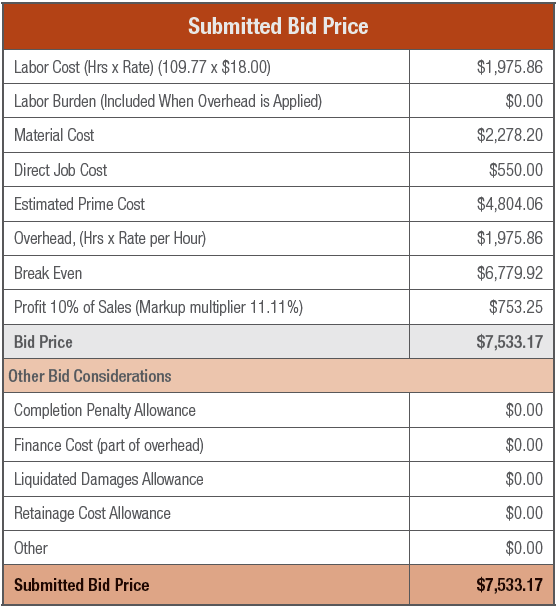|
Estimating is a skill that can make or break a career or
company. Understanding the estimating and bidding
processes is essential for your business to remain
profitable.

This is newsletter #47 in the series. If you have
missed prior newsletters, and are enjoying the series,
we encourage you to purchase the complete Electrical
Estimating Program. Click on the coupon at the bottom
of this page.
|
Other Bid Cost Considerations |
Be sure you review the plans and specifications one final time before submitting your bid, and make sure you understand all of the bid conditions, such as:
Completion Penalty. Some projects may have penalties such as $500 to $1,000 for each day past the scheduled completion date, essentially a punishment for not being done on time. You need to consider these costs when you determine your final bid price. Look at the anticipated job schedule and your list of specialty items, such as switchgear, panels, a generator, lighting fixtures, or other items that will likely need to be special ordered. Find out from the vendors what the anticipated lead time is, and allow some time for the submittal and approval process, perhaps a month. Now look at where the delivery dates fall within the job schedule. Will there be sufficient time to install the items before the scheduled completion date? It may be worthwhile to put a qualification in your proposal about an availability issue related to the job schedule.
Most states and the federal government have outlawed completion penalties; however, the owners are permitted to seek compensation for their out-of-pocket expenses. These expenses are referred to as Liquidated Damages.
Finance Cost. Be sure to include the cost to finance the job if this is applicable. For example, the cost of borrowing $25,000 at an interest rate of 10 percent for a year is $2,500.
Liquidated Damages. The most common component of a Liquidated Damage clause is the calculated cost to the owner arising from each day of delay. That amount is then set forth in the bidding and contract documents. Some documents may limit the owner to recovering a specific amount; however, some allow for complete recovery if the calculated amount falls short. Also, in cases where there has been blatant disregard by a contractor to perform, the owner may file suit for additional damages. It is important to pay close attention to the verbiage of Liquidated Damage clauses.
In the courts, Liquidated Damages cases have not been dealt with in a consistent manner. In the United States, the courts have tended not to enforce the Liquidated Damages clause if the stipulated amount exceeds the actual loss, but have required compensation for the actual harm suffered.
Retainage Cost. Some jobs require that a portion of each payment (typically 10 percent) be held for a specific period of time (typically 90 to 180 days) after the final electrical inspection; and some require a portion be held for the duration of your warranty period.
The purpose of the owner holding back the money (Retainage) is to guarantee that the electrical system has been installed correctly and according to the contract before all final payments have been released. You might want to add the cost of money you do not have access to.
Example: Retainage cost (10%) for 180 days for a $250,000 project will be $1,500 at an interest rate of 12 percent.
Cost = ($250,000 x 10%) x (12% x 0.50)
Cost = ($25,000) x (6%)
Cost = $1,500 or 0.01% of the selling price
Author's Comment: This value might be insignificant to some, but somebody is going to pay for this. Then again, it might already have been included when you applied overhead.

For more information on this topic, get a copy of Mike Holt's Electrical Estimating video program and textbook.
|

